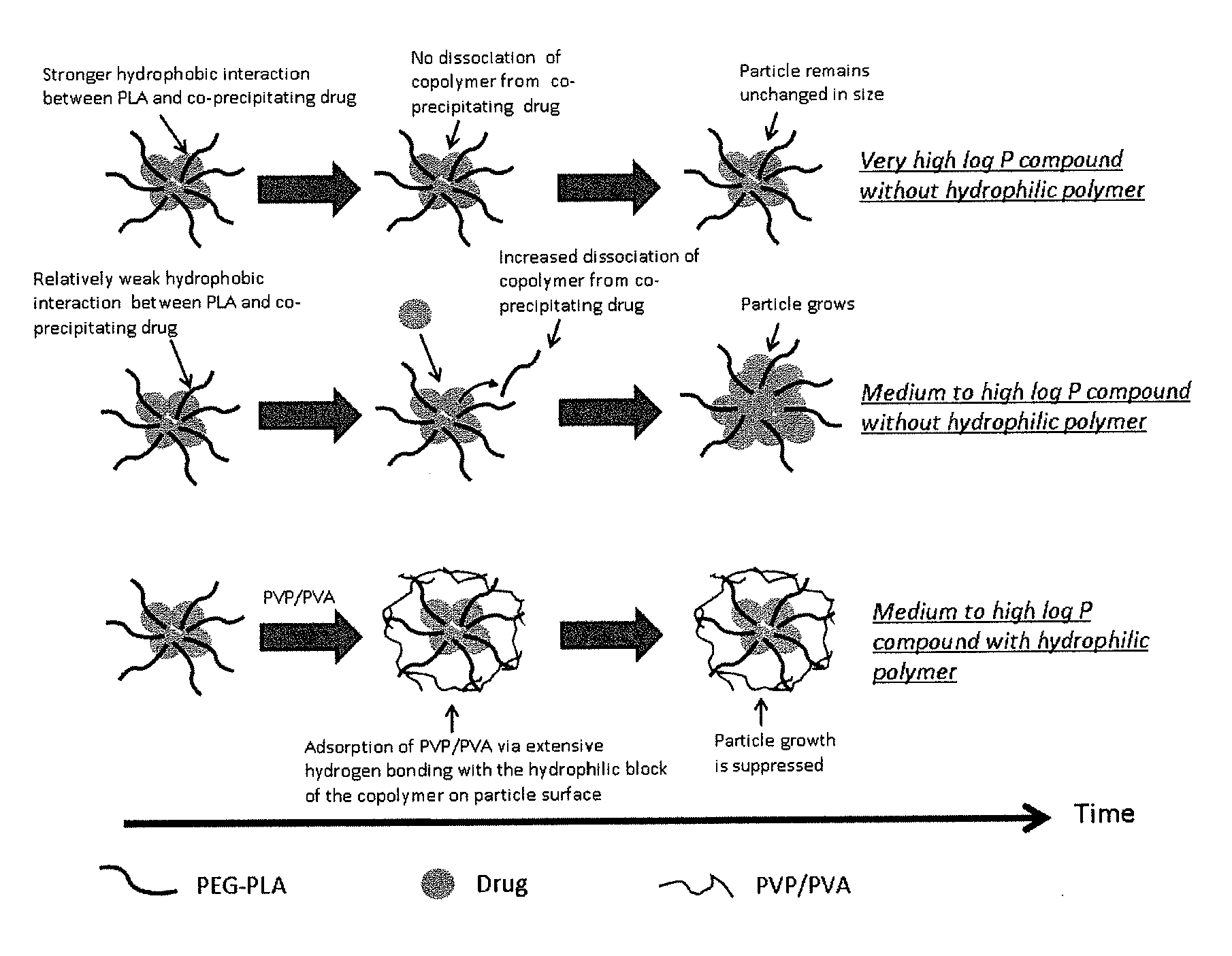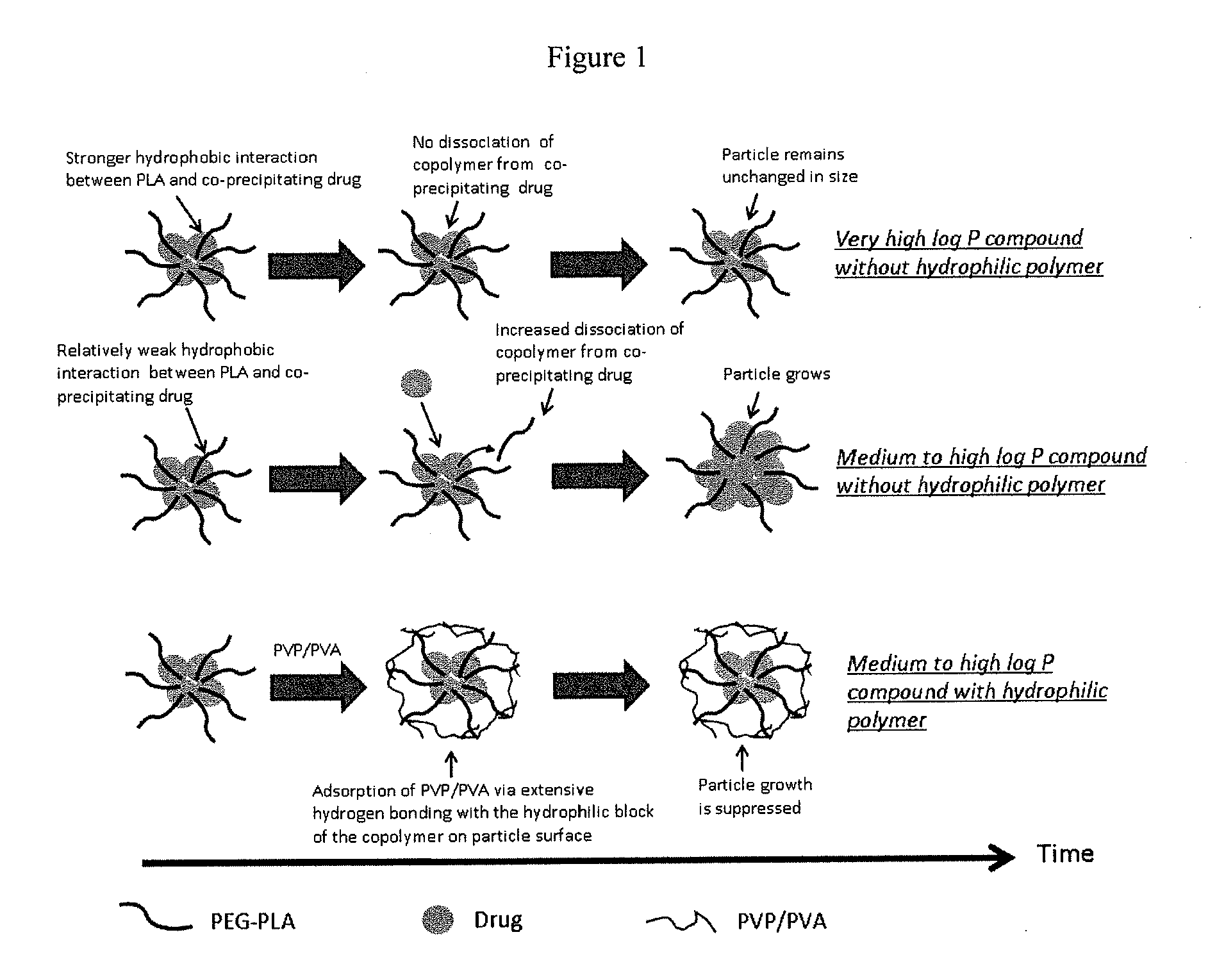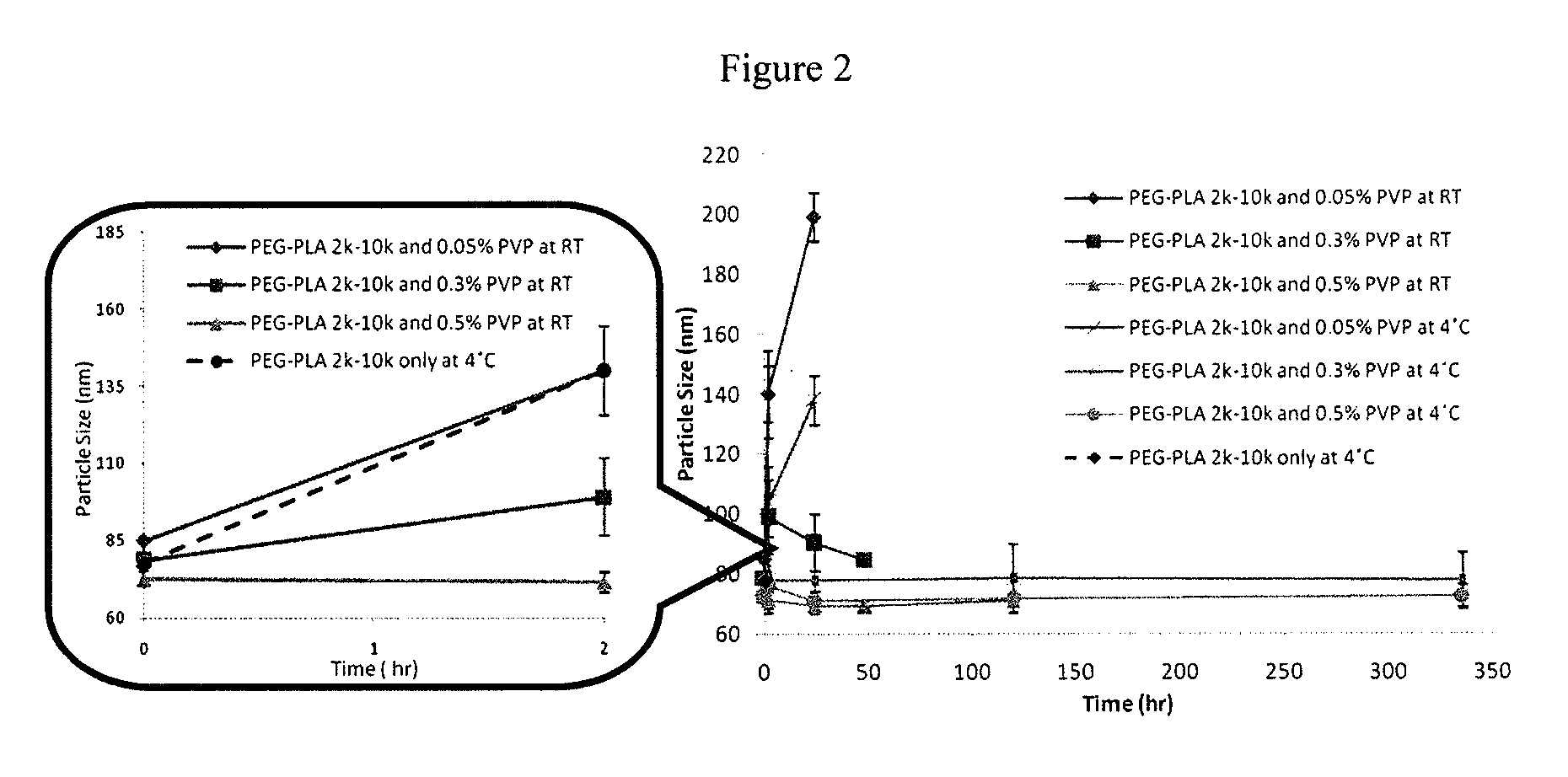Engineering of polymer-stabilized nanoparticles for drugs with log p values below 6 by controlled antisolvent precipitation
a technology of antisolvent precipitation and polymer stabilization, which is applied in the field of engineering of polymer stabilized nanoparticles for drugs, can solve the problems that fnp has not been used to produce stable organic nanoparticles containing drugs
- Summary
- Abstract
- Description
- Claims
- Application Information
AI Technical Summary
Benefits of technology
Problems solved by technology
Method used
Image
Examples
example 1
Role of Cholesterol in the Nanoprecipitation of Itraconazole with Amphiphilic Stabilizers
[0112]The purpose of this study was to investigate the roles of cholesterol (CLT) in the formulation of itraconazole (ITC) nanoparticles with selected amphiphilic stabilizers (ASs).
[0113]In this study, ITC nanoparticles were produced using a four-stream multi-inlet vortex mixer (MIVM). One stream of the mixer contained an organic solvent (dimethylformamide, DMF) while the other three streams consisted of deionized water serving as an antisolvent. In one experiment, the organic solvent was dimethylformamide (DMF). ITC, at a concentration of 5 mg / ml, CLT, at a concentration of 1-5 mg / ml, and ASs, at a concentration of 2.5-5 mg / ml, were dissolved in DMF. Rapid mixing of the organic and aqueous phases in the mixer was controlled with two digital programmable syringe pumps operating at a defined flowrate. The organic stream in inlet A and one of the aqueous streams in inlet C were set at the same flo...
example 2
Influence of Process Variables on the Nanoprecipitation of Ibuprofen Using a Multi-Inlet Vortex Mixer
[0116]The purpose of this study was to investigate the effect on the formulation of ibuprofen-containing nanoparticles as a function of the process variables used in flash nanoprecipitation in a four-stream multi-inlet vortex mixer (MIVM).
[0117]In this study, Ibuprofen (IBP) and an amphiphilic diblock co-polymer (ADCP) stabilizer composed of polyethylene glycol (PEG) and polylactic acid (PLA) were dissolved in a water-miscible organic solvent. The organic solution was then injected along with three other streams of deionized water into an MIVM through its four inlets by means of two syringe pumps. Vigorous mixing, in the mixer, of the organic phase and the deionized water resulted in an extremely high supersaturation level within milliseconds and also rapid precipitation of ADCP-protected IBP nanoparticles. The effects on the particle size and size distribution of the resulting suspe...
example 3
Flash Nanoprecipitation of Ibuprofen from Solutions Using a Confined Impinging Jet Mixer
[0120]The purpose of this study was to formulate stable and uniform ibuprofen-containing nanoparticles via flash nanoprecipitation using a confined impinging jet (CIJ) mixer.
[0121]In this study, Ibuprofen and an amphiphilic diblock co-polymer (ADCP) stabilizer, which was composed of polyethylene glycol (PEG) and polylactic acid (PLA) were dissolved in acetone. In some experiments, the molecular weights of the PEG-PLA was approximately 2000 g / mol; or 2000-8000 g / mol; or 2000-10,000 g / mol; or 5000-10000 g / mol. Hydrophilic polymer stabilizers were dissolved in water. In some experiments, the hydrophilic polymer stabilizers were polyvinyl alcohol, having a molecular weight of approximately 50,000 g / mol or hydroxypropyl methylcellulose, having a molecular weight of approximately 26,000 g / mol. Equal volumes of 2.5 mL of both solutions were injected into a confined impinging jet (CIJ) mixer simultaneous...
PUM
| Property | Measurement | Unit |
|---|---|---|
| particle diameter | aaaaa | aaaaa |
| particle diameter | aaaaa | aaaaa |
| diameter | aaaaa | aaaaa |
Abstract
Description
Claims
Application Information
 Login to View More
Login to View More - R&D
- Intellectual Property
- Life Sciences
- Materials
- Tech Scout
- Unparalleled Data Quality
- Higher Quality Content
- 60% Fewer Hallucinations
Browse by: Latest US Patents, China's latest patents, Technical Efficacy Thesaurus, Application Domain, Technology Topic, Popular Technical Reports.
© 2025 PatSnap. All rights reserved.Legal|Privacy policy|Modern Slavery Act Transparency Statement|Sitemap|About US| Contact US: help@patsnap.com



